Look at a map of Argentina and you’ll immediately see why it’s the second-largest country in South America, behind Brazil. It occupies most of the southern part of South America, from its western boundary of the Andes and its eastern one, the South Atlantic Ocean. It’s one of the countries in the region that fell under the influence of the Spanish, with significant immigration from Italy, especially helping to form its culture.
Indeed, the name Argentina is the Italian word for “silver” and was probably first used by Venetian and Genoese explorers. A civil war followed the fight for independence early in the 19th century until 1861 and peace settled the land.
For many decades it prospered but has suffered economic issues and periods of political instability. However, it is important to stress that Argentina is a wonderful country that visitors will enjoy. Of all the cities in Argentina, its capital Buenos Aires is the most captivating and much of the national population of 46 million live in the province that takes the capital’s name.
The Andes, the Pampas, which produces Argentina’s famed beef, the stunning scenery in the extreme south and the lovely coastal beaches are all places where you can really get to know Argentina. Many of Argentina’s cities have impressive architecture, fine cuisine and comfortable accommodation. Read on to get a flavour of its main cities before you plan for a visit.
Cities in Argentina
Top Tours
- Small-Group City Tour of Buenos Aires – Discover the secrets of Argentina’s top city.
- Argentina Highlights in 12 days – Buenos Aires, Southern Patagonia and Iguazu Falls.
- Polo day in Pilar, Buenos Aires – Experience polo in Argentina.
20 Argentina Cities
1- Buenos Aires
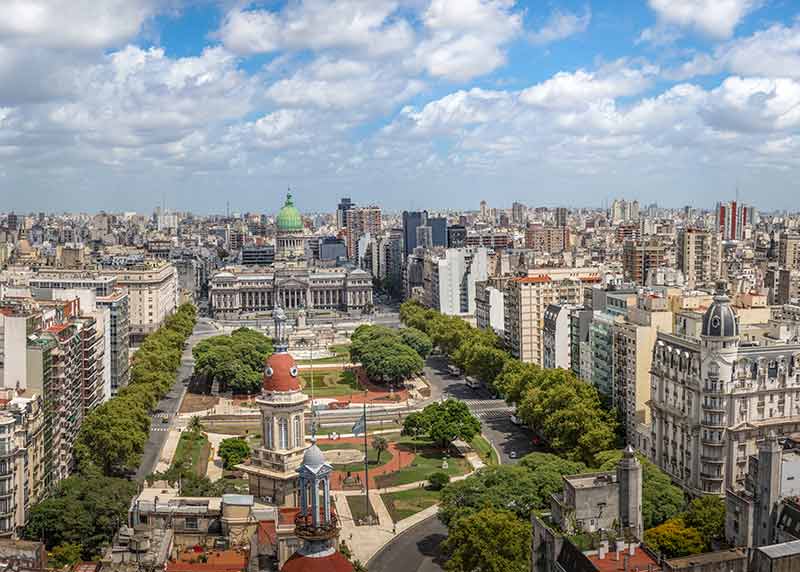
Buenos Aires, Argentina’s capital and largest city, is an elegant city with vibrant neighbourhoods, several landmarks and a culture that mixes European with Latin.
There are historic buildings, colourful street art, quality restaurants and amazing museums and galleries.
The tango, a hugely popular dance, was devised here, and you can even see street performances at times.
You will never lack something to see and do in this city with a population of 15 million in its heart and the immediate surrounding region.
If you truly want to observe the passion of its people, try for a ticket to watch Boca Juniors or River Plate play soccer, an authentic contemporary Argentinian experience.
Recommended tours:
- Small-Group City Tour of Buenos Aires
- Private City Tour of the City of Buenos Aires with a local guide
2- Cordoba
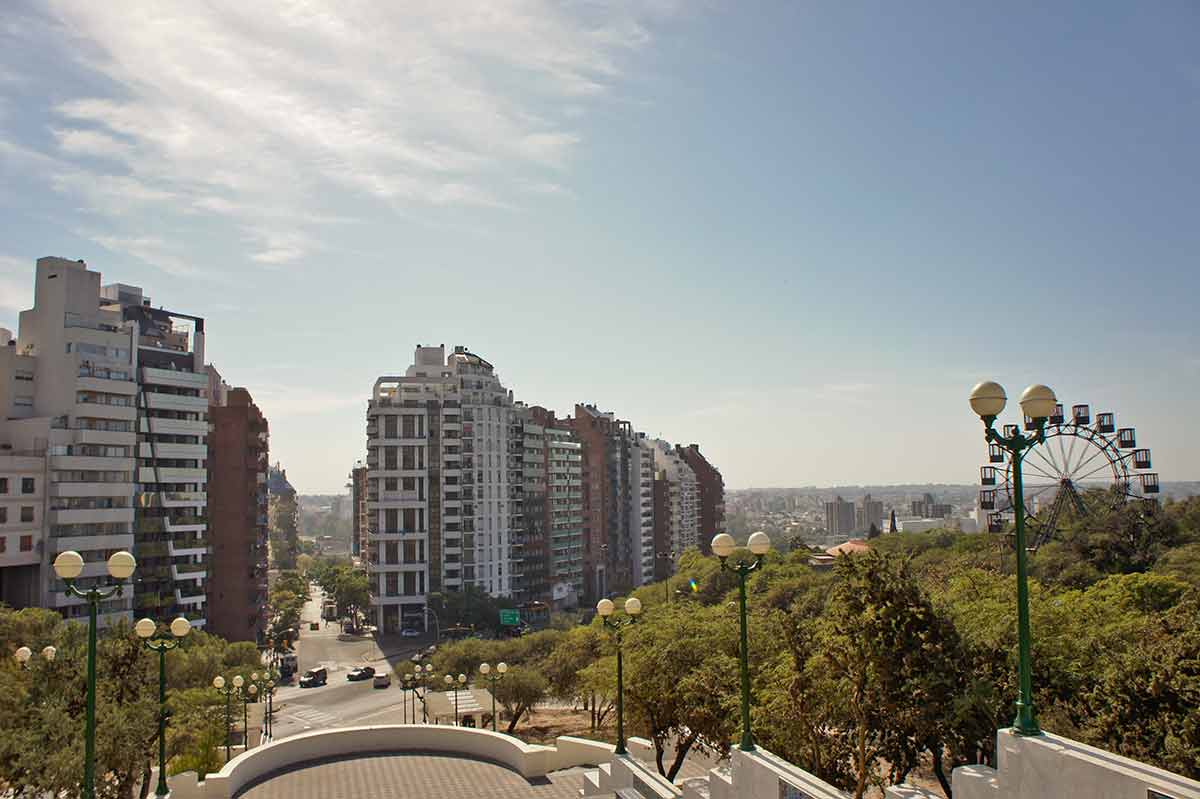
Cordoba is a city of old and new, with colonial influences in its architecture with wide streets and interesting landmarks.
It is also a university city, with a huge student population guaranteeing lively evenings and nights.
Cordoba is a city of art and culture, with good museums, galleries, theatre and cinema.
It lies to the northwest of Buenos, 700 kilometres (435 miles) distant, with a population of around 1.35 million.
Its location is below the Sierra Chicas on the Suquia River.
Its origins stretch back to the second half of the 16th century and, over the years, has attracted immigration from several countries, Spain obviously, Italy and many more countries.
Recommended tour: Private Wine Tour To Colonia Caroya
3- Rosario
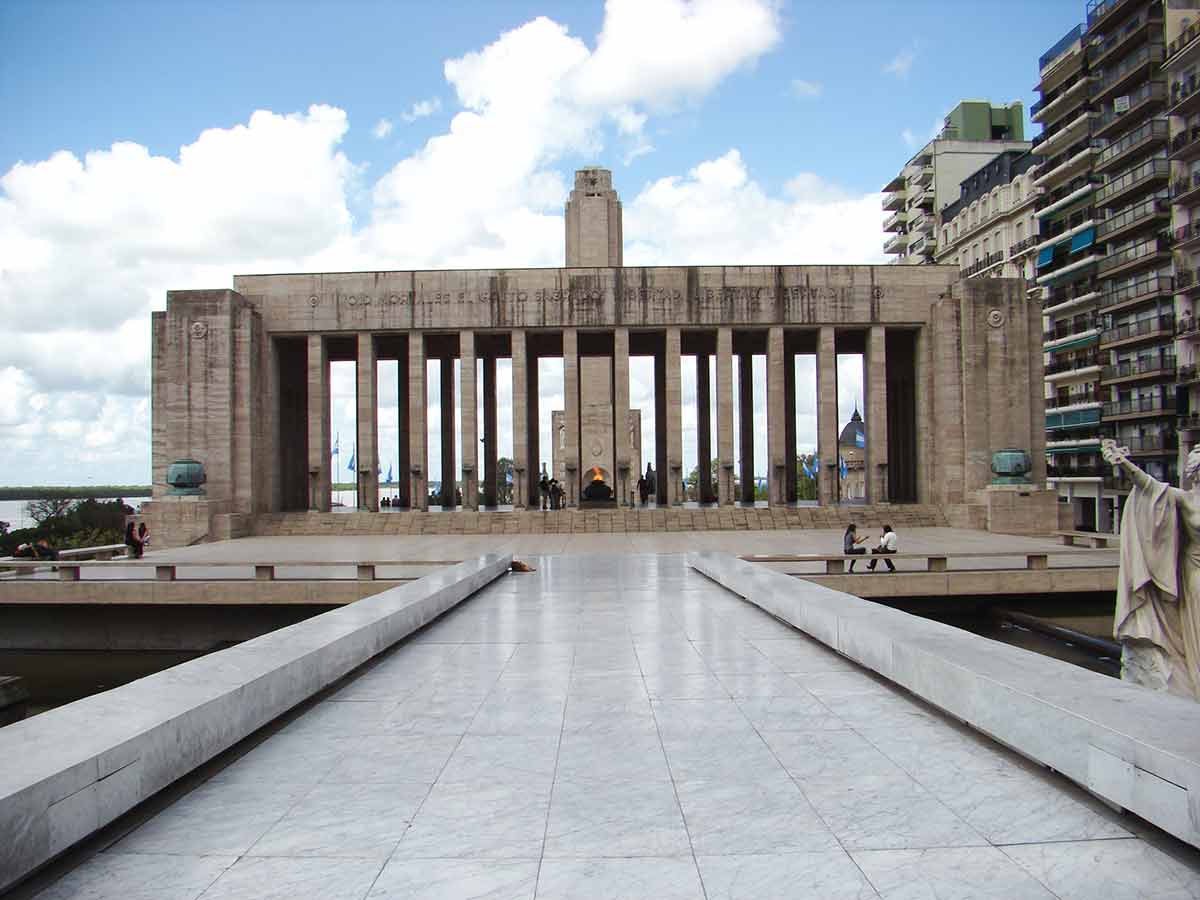
Rosario is a historic port that has successfully revived the parts of the city that were once decaying.
Now there are districts with lively bars and restaurants as well as galleries.
The waterfront is now trendy, with the inner-city delta islands’ beaches very popular with locals and tourists.
Rosario is 300 kilometres (185 miles) northwest of Buenos on the Parana River and has a greater metropolitan area with a population of 1.75 million.
Its origins as a settlement were not until the end of the 18th century, so Rosario has a proliferation of art deco styles in houses and buildings rather than colonial architecture.
Its manufacturing base relies on agricultural produce grown locally, but it is also important in the auto industry.
4- La Plata
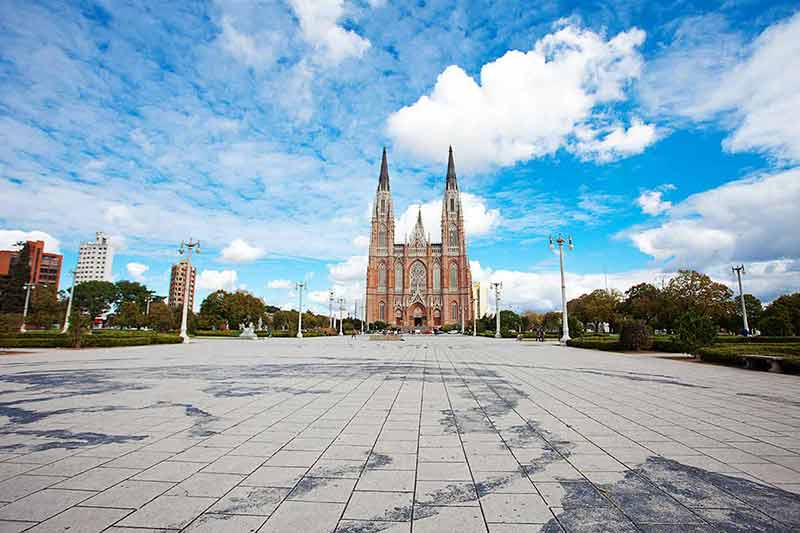
La Plata is the capital of Buenos Aires Province, a university city that was planned.
As a result, its orderly layout makes La Plata easy to navigate.
La Plata is just a short distance inland on the southern bank of the Rio de la Plata Estuary, and it dates back to the 1880s.
You should certainly see the Natural History Museum on a visit to La Plata.
The large neo-Gothic cathedral and Palacio Municipal in German Renaissance style in Plaza Moreno and its lovely central park are other highlights.
The student population guarantee a lively nightlife.
The population exceeds three-quarters of a million.
5- Mar del Plata
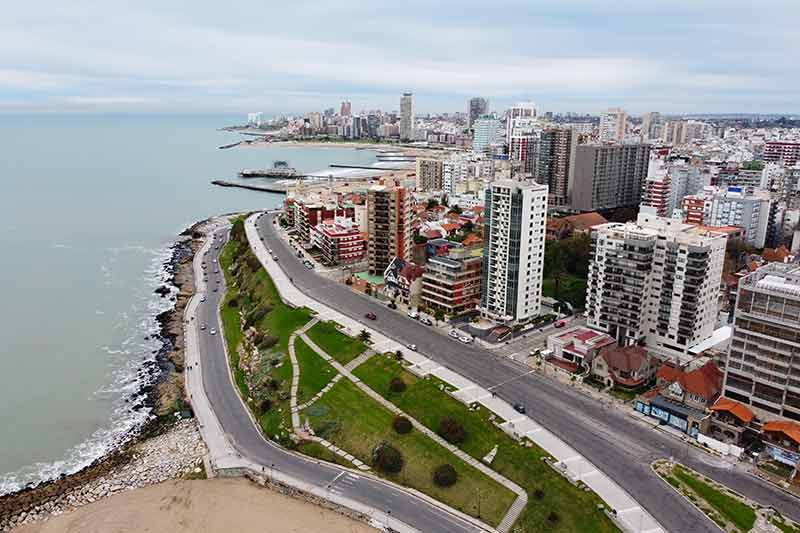
Mar del Plata is a beach resort nicknamed “The Happy City.”
In the high season, its beaches get very crowded early in the calendar year, especially Punta Mogotes and Playa Grande.
Its waterfront is on the Atlantic, and you will find some lovely seafood restaurants along its length.
The shopping is excellent while there is also a good range of museums and galleries to explore.
Its population has grown beyond 600,000, so it naturally has an infrastructure to satisfy visitors.
Mar del Plata was founded in the late 19th century, so its architecture is relatively modern.
The best place to learn the city’s story is at Roberto T. Barili History Museum.
Recommended tour: Horse and Polo Trip in Mar del Plata
6- San Miguel de Tucuman
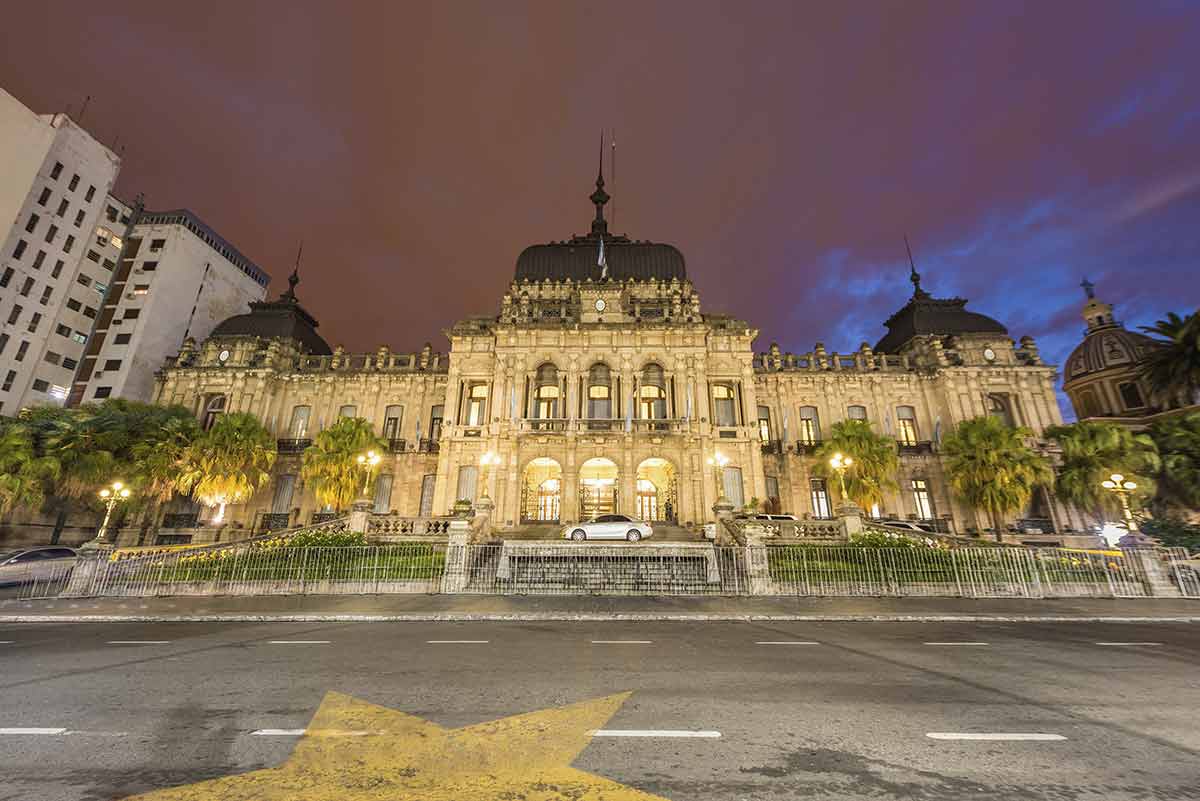
Tucuman is the largest city in the northwest, and it has a young population that ensures it is a lively place.
It’s also an important commercial city.
The city’s hub is Independence Square, where you will find the cathedral and the art nouveau Government House.
Museo Casa Padilla was once an impressive 19th Century home, and today displays reminders of those days.
The Museo Casa Histórica de la Independencia will show you the story of independence from the Spanish in 1816, almost three centuries after they had arrived.
There are numerous hotels, bars and restaurants within San Miquel de Tucuman.
Recommended tour: Tucuman, Tafi del Valle and Quilmes Ruins Full Day Tour
7- Salta
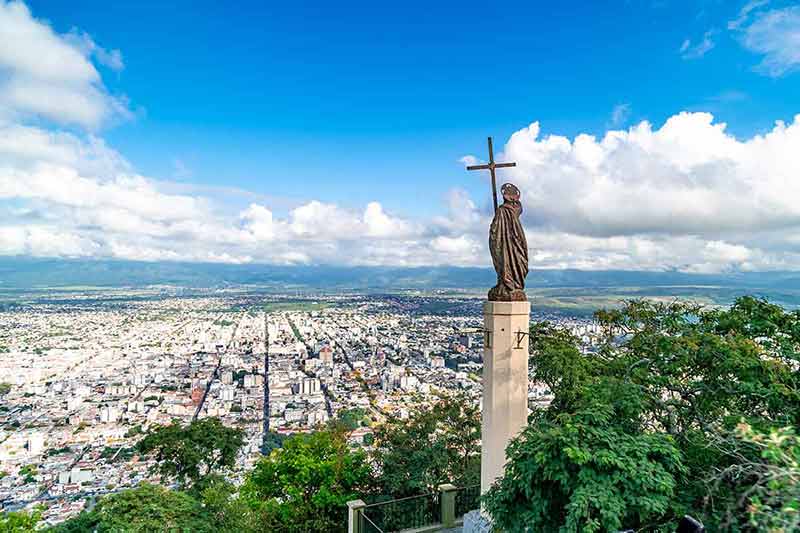
Salta is nicknamed “the Fair” due to its impressive architecture, museums and beautiful setting.
It sits between mountains and has become a popular tourist destination.
Colonial architecture is a feature of the city.
Saltal is also a city in Argentina where you can discover more about life in the Andes.
The heart of the city Plaza 9 de Julio with its great cafes, the neoclassical Salta Cathedral and El Cabildo, the 18th-century town hall built in the 18th century but now a historical museum.
Another museum nearby, Museo de Arqueología de Alta Montaña (MAAM), is where you will learn more about the Incas.
Recommended tour: Full-Day Tour Cafayate Calchaqui Valleys with Wine
8- Santa Fe de la Vera Cruz
Santa Fe is the capital of the province of the same name.
Santa Fe is in the country’s northeast near the Parana and Salado Rivers.
With a population of around 400,000, Santa Fe de la Vera Cruz is 170 kilometres (106 miles) north of Rosario.
The first settlement here was formed close by in the 1570s but moved in 1653 because of regular flooding.
The centre has plenty of reminders of those early times.
Walkways on the waterfront provide plenty of opportunities to enjoy refreshments while you watch the world go by.
Likewise, join a cruise on the Parana to get a different perspective of the city.
9- Parana
Paraná sits on the eastern bank of the river of the same name, opposite the city of Santa Fe, which is linked by a tunnel built in the late 1960.
This city of a quarter of a million was first settled in the 16th century but it was in the 19th century when it saw serious growth as it was made the capital of the Argentine Confederation briefly.
It still performs an administrative function for its province, but Parana is also an important port for the shipment of cereals, livestock, primarily cattle, fish and timber.
You will see colonial churches and buildings in European style such as the theatre, the cathedral and the Government House in the centre.
10- Corrientes
Corrientes is 1,000 kilometres (625 miles) from Buenos Aires on the Parana River, close to the border with Paraguay.
It is the capital city of Corrientes Province.
The present population is 350,000, and annually they enjoy a famous carnival.
This city in Argentina is a mix of modern and colonial, the oldest city in the northeast, founded in 1588.
Its northern boundary is the river, while the General Manuel Belgrano Bridge links it with Resistencia across the water to the west.
The cathedral, the Church of the Cross of Miracles and the Convent of San Francisco are notable landmarks in its historic heart.
Several museums also display the history of this part of Argentina.
11- Posadas
The border with Paraguay in the northeast of Argentina is the Parana River with Posadas on the Argentinian bank.
Riverside Avenida Costanera is a roadside boulevard from where you can view Encarnación, the Paraguayan city on the other bank.
San Roque Gonzalez de Santa Cruz Bridge links the two.
Posadas’ population approaches 330,000, with employment in furniture, textiles, tobacco, food, and construction sectors.
The port is now more known for its sport vessels, passenger ferries than for its economic activities.
12- Resistencia
Resistencia on the Negro River is the capital of Chaco Province in North East Argentina.
The city proper has a population just below 300,000, yet a further 100,000 live in the immediate vicinity.
Local resistance from the Guaycuru prevented significant European settlement until the later stages of the 19th century.
Once immigration began, it was largely Europeans from Italy.
Resistencia is known as the “city of sculptures”, with over 500 monuments in its streets.
There has been a sculptures contest since 1988, now sponsored by UNESCO.
Museums in the city include the René Bruseau Provincial Museum of Fine Arts, the Juan Alfredo Martinet Museum of Anthropology and the Ertivio Acosta Museum of Man in Chaco.
13- Pilar
Pilar in Buenos Aires Province is a city of 300,000 whose profile has grown due to the development of new estates, country clubs and the game of polo.
The Treaty of Pilar in 1820 announced the Argentine Federation, establishing the city’s place in national history.
Its proximity to Buenos Aires and the transport infrastructure ensured its growth through the 20th Century, with both road and rail.
The city’s highlights include the Parish of Our Lady of the Pillar, the October 12 Plaza, the City Hall, and the Alcalde Lorenzo López Historical Museum.
Polo and golf facilities mark Pilar as a significant city for prosperous Argentinians.
14- Bahia Blanca
Bahía Blanca is an Atlantic seaport within Buenos Aires Province with a population of 300,000.
Its name, “White Bay”, identifies the colour of the salt found locally.
In the 1820s, the Spanish built a fortress here, but it was more than half a century later when the settlement expanded.
In the intervening years, there were several attacks by local Malones, the indigenous tribe.
Immigrants began to arrive from Spain, Italy and France.
Years later, significant numbers also arrived from Germany and Eastern Europe, so the population is a real mix.
15- Mendoza
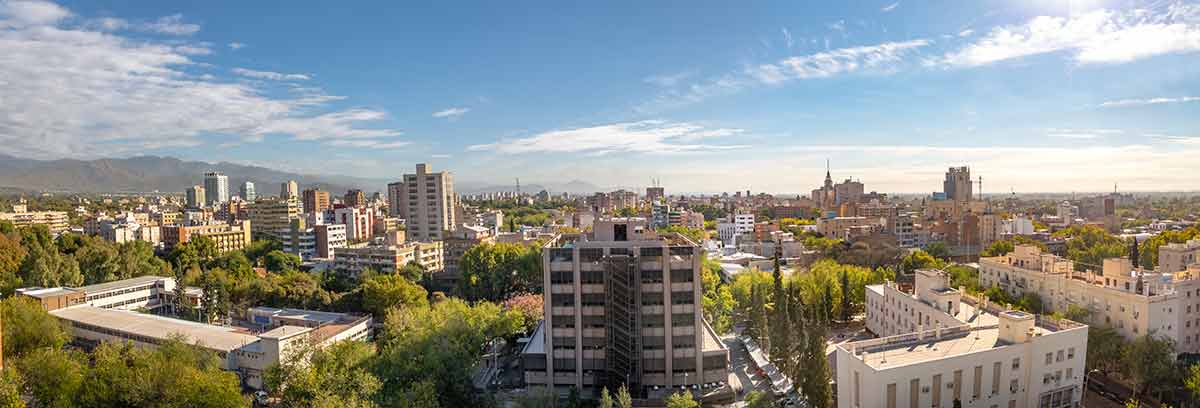
Argentina produces some fine wines, Malbec is perhaps the most famous varietal, and Mendoza is known as the hub of the industry.
It’s a beautiful tree-lined city with the Andes, and South America’s highest mountain, Aconcagua, a short distance to the west.
An earthquake struck in the late 19th Century, meaning that a massive reconstruction was needed to produce today’s city.
The spacious avenues were the result.
Some historic buildings did survive, and you will see them as you walk around while looking for one of the city’s lively bars and restaurants.
Recommended tour: All Day, Small Group, Luxury Wine Tour with Gourmet Lunch
16- Puerto Iguazu
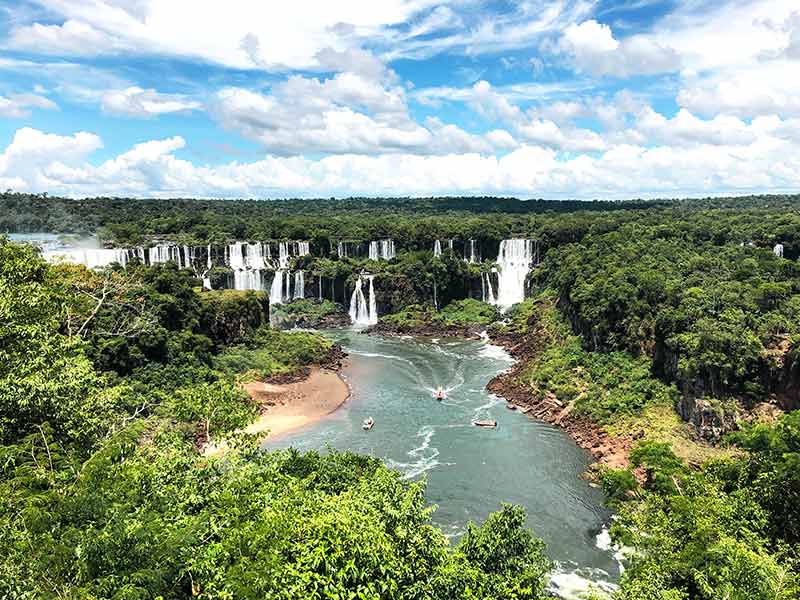
Of the many famous waterfalls in the world, the most impressive is Iguazu Falls which straddles the border with Brazil.
There are around 270 cataracts and several ways to experience the falls.
You can walk across the rushing water on a wooden walkway to almost touch water as it cascades down or take a boat ride right up to where the falling waters hit the surface.
There are other walkways at different levels from which you can take incredible photographs.
The city needs few attractions because of the Falls, but it has accommodation and restaurants to cater for demand.
Recommended tour: Iguazu Falls Tour, Boat Ride, Train, Safari Truck
17- San Carlos de Bariloche
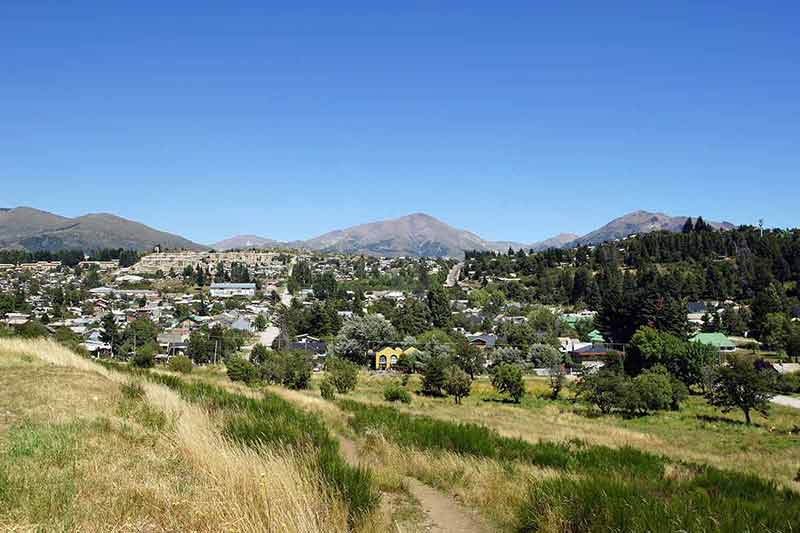
Bariloche’s setting has few equals; stunning lakes and the lower slopes of the Andes is spectacular.
The city is within the Nahuel Hatapi National Park; the name also is the name of the lake.
Because of the breathtaking landscapes around it, this city has significant visitors from home and abroad.
While it can get busy with tourist traffic, there are enough rural escapes for you to find space for trekking in the summer and winter skiing.
You might think you are in Switzerland when you see its architecture and taste the local chocolate.
Its development as a tourist hot spot dates back to the 20th century and has created plenty of employment for its 120,000 population.
Recommended tour: Half–Day Small Circuit Tour in San Carlos de Bariloche
18- San Martin
San Martin de los Andes is on the shores of Lake Lacar in a relaxing mountainous region.
The setting is beautiful, so the city attracts visitors all year round.
In the winter you can rent a chalet and enjoy its skiing facilities.
In contrast, the mountains offer lovely trekking trails in the summer, with boating a popular activity, and it’s a paradise for bird watchers.
As well as plentiful accommodation, San Martin has numerous bars and restaurants.
Its name remembers a famous hero General, the man who led the successful war against the Spanish, who led to independence, Jose de la San Martin.
Recommended tour: San Martin de los Andes and the Seven Lakes Day Trip from Bariloche
19- Puerto Madryn
Puerto Madryn has riches above and below the waves.
Its beaches on the Golfo Nuevo attract significant numbers while the marine life sees plenty of its visitors entering the water.
Whales, including orcas, are seen regularly, with plenty of sea lions happy to swim close to you as you snorkel.
Southern Right Wales breed in the bay between May and December.
This is Patagonia, and the Peninsula Valdes across the bay has penguins and elephant seals, food for the orcas.
The settlement involving Spanish, Italians and Welsh began in 1865.
While there, go to Ecocentro, a clifftop museum with Patagonian nature, exhibits and a lighthouse-design tower with great ocean views.
Recommended tour: Snorkeling with Sea Lions by Madryn Buceo
20- Ushuaia
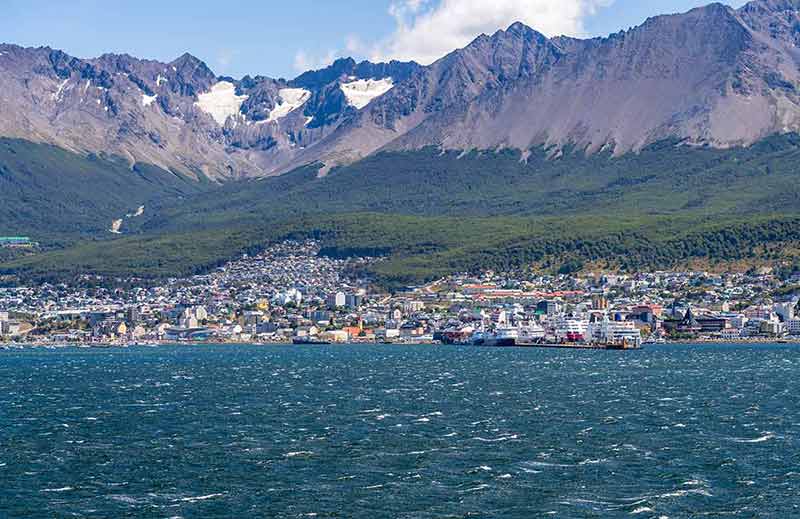
Ushuaia is in the deep south of Argentina, a coastal city of 80,000 in Tierra Del Fuego.
The infrastructure is low-key, with fascinating museums, restaurants and a casino.
It’s in a natural setting with outdoor activities, including kayaking, skiing and trekking, with sailing and scuba diving readily available.
Ushuaia is also your starting point for exploring both Antarctica and the Andes.
It was formed by British missionaries in the second half of the 19th Century with little in the way of Argentinians in its early years.
Tours to Isla Yécapasela, “Penguin Island”, are a great experience when the weather is good.
Recommended tour: Half-day excursion to the Tierra del Fuego National Park
Plan Your Trip

Rent A Car – Find the best car rental rates at Discover Cars. They compare car hire companies to provide you with the best deal right now.

Find A Hotel – If you’re curious about this article and are looking for somewhere to stay, take a look at these amazing hotels.

